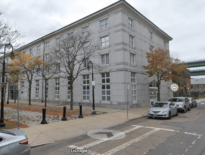The median size of a Boston-area home affordable on a $3,000-a-month budge has dropped by 14 percent year-over-year while the national median down payment has doubled over the course of the pandemic, underscoring the affordability challenges buyers face in today’s housing market.
The two statistics were calculated in separate reports released this week by economists and brokerage and listings portal Redfin.
As the average 30-year mortgage rate has risen to nearly 7 percent and a shortage of inventory have combined to drive Massachusetts’ median year-to-date home price up by over 37 percent between 2019 and 2022 according to The Warren Group, publisher of Banker & Tradesman.
In Boston, this has meant a $3,000 monthly budget netted a homebuyer 214 fewer square feet in the median-sized house as of Sept. 29 compared to Sept. 30 of last year. Redfin calculated that median-sized house would be 1,269 square feet in size.
Boston was 13th on Redfin’s ranking of how much this notional $3,000-a-month home has shrunk in the nation’s 50 biggest metro areas.
“For buyers who need a home right now–and can still afford it–compromise is the name of the game,” Redfin Senior Economist Sheharyar Bokhari said in a statement released with the report. “Some buyers will choose to sacrifice on location or move further away from the city center so they can get the space they want, while others will settle on a smaller home in their ideal location.”
The analysis assumed a 20 percent down payment, something typically out of reach for first-time buyers. These buyers often have to take out much bigger loans as a proportion of the home’s sale price thanks to a lack of wealth or equity built up in a prior home that can be used to fund a large down-payment.
In a separate report, Redfin calculated that the nation’s median homebuyer made a down payment in July almost twice the size of the median down payment in July 2019. The amount, $62,500, was also 13.6 percent higher than July 2021 but down slightly from May and June highs of $66,000 as competition for homes has waned somewhat.
The median buyer’s down payment amounted to 15.2 percent of the purchase price in July, comparable to July 2021 but up significantly from the 10 percent that was nearly unchanged between early 2015 and early fall 2020.
Some of that increase is due to an increase in the share of buyers making large down payments as FHA and VA mortgage products – once the industry standard for first-time homebuyers – were unable to compete with offers from better-off buyers. Just shy of 60 percent of buyers put down over 10 percent, compared to around 50 percent in 2019.
“Homebuyers don’t need to make enormous down payments anymore because they’re much less likely to encounter bidding wars now that so many Americans have bowed out of the market,” Bokhari said in a statement. “And many buyers can no longer afford to put down 15% or 20% of the purchase prices. Between higher mortgage rates creating higher monthly housing payments and inflation pushing up the prices of everything from food to fuel, buyers need to set aside more money for everyday expenses. That, along with the slumping stock market, is cutting into down-payment budgets. While down payments will likely remain elevated above pre-pandemic levels, they’ll probably fall a bit in the short term.”




 |
| 


